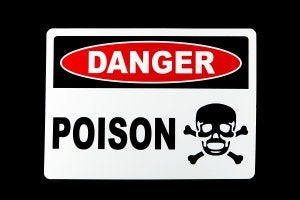-
The Importance of Safely Removing Lead Paint
You know that testing for asbestos while renovating in San Francisco is important to remember, but what about lead paint ? Many older homes still contain lead paint, which can contaminate your indoor air quality and cause health problems for you and your family. Take a look at this video clip on the importance of safely removing lead paint.
When you start thinking about a bathroom or kitchen remodel, the many benefits will probably occupy your mind. You should also consider the dangers, however, especially if you have children in the house. Ingesting or breathing in lead can be harmful for anyone, but it’s particularly dangerous for younger children. Exposure to lead paint can lead to learning disabilities, brain damage, and problems with the nervous system. Make sure your contractor is certified, and ask the right questions so you can get your lead paint removed as safely and effectively as possible.
-
Understanding the Symptoms of Lead Poisoning
If you’re concerned that your home may have lead paint in San Francisco, it’s vital that you schedule professional lead paint testing to ensure the health of you and your family. Lead based paint is commonly found in older buildings and is the most common cause of lead poisoning in children. Small amounts of lead buildup in the body can lead to serious health problems, and higher levels can be fatal.
Sources of Lead Poisoning Symptoms

It can take months of exposure before symptoms of lead poisoning manifest, making it difficult to detect. A person with high amounts of lead in their blood can appear healthy, and may not seem sick until their body has accumulated dangerous amounts of lead. Adults can suffer from lead poisoning, but children under the age of six are particularly vulnerable. While lead paint is the most common source of lead poisoning for children, adults who work with batteries or in construction can be exposed to hazardous levels of this toxin.
Lead Poisoning Symptoms in Children
Young children have a higher risk for lead poisoning because they frequently put their hands and objects in their mouths, and sometimes swallow non-edible items. At this age, children’s brains are developing rapidly, and their bodies absorb lead quickly. Symptoms of lead poisoning in children can include vomiting, weight loss, irritability, fatigue, abdominal pain, and constipation. Children affected by lead poisoning are also susceptible to hearing loss, learning problems, and developmental delay. Infants exposed to high amounts of lead can suffer slowed growth and learning disabilities.
Lead Poisoning Symptoms in Adults
Adults who have accumulated dangerous amounts of lead in their bloodstream can experience headaches, joint pain, abdominal pain, constipation, and muscle pain. Long-term and more severe symptoms include high blood pressure, hindered mental function, mood disorders, memory loss, and reduced sperm count or abnormal sperm. Exposure to lead can also cause premature birth or miscarriage in pregnant women.
-
Why is Lead Exposure Dangerous?
Exposure to lead or lead paint in San Francisco can cause dangerous symptoms of lead toxicity, particularly in young children. Lead-based paint can deteriorate over time and become airborne, significantly decreasing your home’s indoor air quality. When you inhale lead paint particles, you are at risk for lead toxicity or lead poisoning symptoms.
Watch this video to learn more about the dangers of exposure to lead and lead-based paint. If you suspect that your home contains lead pipes or lead paint, you should hire an expert for lead testing and lead abatement. Lead poisoning symptoms in children may include developmental delays, learning difficulties, weight loss, hearing loss, sluggishness, irritability, abdominal pain, vomiting, and constipation. Lead poisoning symptoms in adults include high blood pressure, cognitive problems, muscle pain, joint pain, headaches, memory loss, mood disorders, abdominal pain, constipation, and reproductive problems.
RECENT POSTS
categories
- Uncategorized
- Lead
- Mold
- San Francisco Mold & Asbestos Removal
- Indoor Air Pollution
- Mold Remediation
- Asbestos
- Safe Air Fast
- Mold Inspection
- Remediation
- Bacteria Testing
- Asbestos Testing
- Abatement
- Lead Testing
- Sewer Line
- Lead Survey
- Mold Testing
- Air Quality Inspection
- Home renovations
- Allergies
- Renovation Contractor
- Infographic
- lead paint
- Air Quality
- Air Quality Test
- Mold removal
